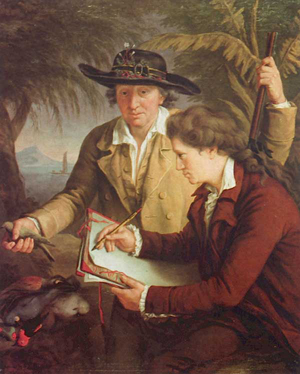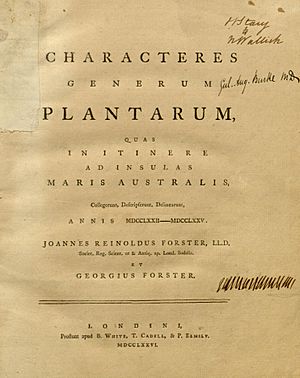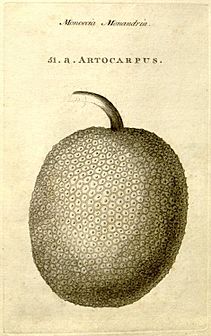Characteres generum plantarum facts for kids
Characteres generum plantarum is a science book from 1775/1776. Its full Latin name means "Characteristics of the types of plants collected, described, and drawn during a voyage to islands of the South Seas, in the years 1772–1775 by Johann Reinhold Forster and Georg Forster." The book was written by Johann Reinhold Forster and his son, Georg Forster. It describes many new plants they found during James Cook's second voyage around the world.
The book has 78 detailed pictures of plants. Most of these pictures show close-ups of flowers. The Forsters gave names to 94 different plants from 75 groups (genera). About 43 of these names are still used by scientists today. Many plants were named after the Forsters' friends or people who supported their work. This book is very important because it was the first to publish names and descriptions of many plants native to New Zealand.
How the Book Came to Be

Johann Reinhold Forster was the main scientist who traveled with James Cook on his second voyage. This journey lasted from 1772 to 1775. His son, Georg Forster, went along as an artist and helper. They collected plant samples with Anders Sparrman, who was a student of the famous scientist Carl Linnaeus.
After they returned to England, Characteres generum plantarum was the first science book published from the voyage. Reinhold Forster wanted to quickly share his discoveries. He hoped this would make him famous as a scientist. He also wanted to be sure he got credit for finding these new plants. He was worried that Joseph Banks, another botanist from Cook's first voyage, might publish similar findings first.
The Forsters prepared Characteres while still on the voyage. They wrote it very quickly. Because of this, the book had some mistakes. Reinhold Forster later wished he had not rushed it. He also regretted not asking Joseph Banks for his ideas or looking at Banks's plant collections.
Captain Cook tried to stop the book from being published in late 1775. He might have wanted his own travel story to come out first. But Lord Sandwich, a high-ranking government official, gave Forster permission to publish the book. Forster had to pay for it himself. The first special edition was given to King George III in November 1775. This made it impossible for Lord Sandwich to change his mind later.
What's Inside the Book
The book begins with a special message to King George III. It explains why the journey was made. It also describes how the Forsters and Sparrman collected and studied the plants. The authors also apologized for only including 75 plant groups.
Even though both Forsters are listed as authors, Georg Forster later said that he and Sparrman wrote all the plant descriptions. He said his father was more interested in animals. The book contains 78 pictures of the plants. These pictures mostly show close-up details of the flowers.
The plants were named using the Linnaean system. This was a popular way to name and classify living things at the time. For some plants, the Forsters used local names or ideas from the people they met.
For example, the Diospyros plants (which include Diospyros major) were called Maba by the Forsters. This was their name in Tonga. The Xylosma plants were named Myroxylon, which means "myrrh tree." This name came from how local people used the plant to make their hair oil smell nice. Many plant groups were named after the Forsters' friends or people who might help them. These included Barringtonia, named after Daines Barrington, and Pennantia, named after Thomas Pennant.
-
Plate 51 shows Artocarpus, the breadfruit plant, with details of its fruit.
Different Versions of the Book
The book was printed in two main sizes: a large size called "folio" and a smaller size called "quarto." The larger folio copies were often given as gifts to friends, supporters, and important people. Most copies are dated 1776, but a few from 1775 are known. It's likely that both sizes were printed in November 1775.
The two 1775 folio copies were special. One was given to King George III. The other was sent by Reinhold Forster to Carl Linnaeus in November 1775. Reinhold Forster wrote that 25 folio copies were made. We know where at least 16 of these copies are today. These include copies owned by Joseph Banks and Thomas Pennant. The copy given to Charles III of Spain is now in a library at the University of California, Los Angeles.
Many more quarto copies were printed, probably several hundred. This smaller version became widely available in January or February 1776. It sold for about £1 and 7 shillings.
The book was later translated into German in 1779. This translation was done by Johann Simon von Kerner, who was in charge of the Botanical Gardens of Stuttgart. The original Latin version was also reprinted later as part of Georg Forster's complete works.




